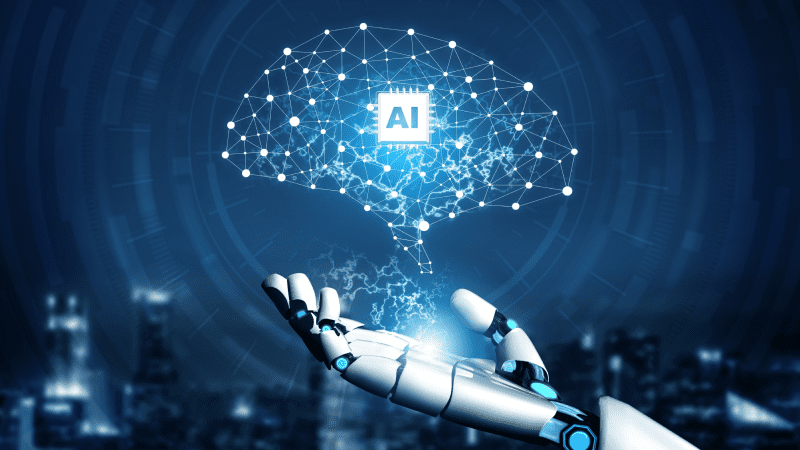
Digital Growth vs. Environmental Stewardship
Insights from the UNCTAD Report (Part 1/2)
This month, The UN Commission for Trade and Development released its report on the Digital Economy.
Centre for Trustworthy Technology

Stanford University’s Human-Centered AI (HAI) recently released the 2024 AI Index, shedding light on the rapid advancements and potential risks associated with AI technology. As AI continues to evolve and integrate into various aspects of society, it is crucial to examine the most common concerns regarding AI and understand how the Index addresses them.
One of the primary risks discussed in AI is the technology’s potential exacerbation of existing biases and discrimination. AI systems are trained on real-world training data with societal biases, which could inadvertently learn and thus perpetuate these biases. This may lead to unfair treatment of certain groups, particularly in admissions, hiring, lending, and criminal justice. Fortunately, the Index reported increased human evaluation, where generative models, such as The Chatbot Arena Leadership, actively incorporate human input. Human evaluations are critical to fact-checking and mitigating risks from bias, assuming the human evaluators are actively aware of their biases.
Fortunately, the Index reported increased human evaluation, where generative models, such as The Chatbot Arena Leadership, actively incorporate human input. Human evaluations are critical to fact-checking and mitigating risks from bias, assuming the human evaluators are actively aware of their biases.
Another significant risk is the potential for AI to be used nefariously. As AI capabilities advise, there is a growing concern regarding the development of autonomous weapons, the spread of misinformation and propaganda, and the use of AI for unethical surveillance. This risk is especially relevant considering the Index reported significant strides in autonomous AI models, which are currently predominantly limited to tasks like shopping or basic research support. However, these models prove AI’s increasing ability to emulate human-like logic, necessitating a more comprehensive discussion on mitigating the risks of agentic AI. To address these risks, international cooperation should yield clear ethical guidelines and regulations that govern the development and use of AI technologies.
Moreover, a common concern is the risk of job displacement from AI automation. Sophisticated AI systems may replace human labor across various verticals, leading to higher productivity but widespread job displacement. Therefore, it is critical to consider the social implications of shifting economic labor models and develop solutions for reskilling and upskilling workers while creating new job opportunities or considering alternative economic models. Optimistically, the 2024 Index report found that AI increased productivity for labor workers, omitting mentions of replacing human labor, but only when there are sufficient oversight structures.
Finally, the report emphasizes the need for AI governance and regulation to establish oversight mechanisms ensuring responsible AI development and deployment. More specifically, the report described the rise of increasingly advanced deepfakes, complex vulnerabilities in language learning models (LLMs), low transparency, etc. Fortunately, 2023 saw more proactive discussions regarding immediate model risks and long-term implications. However, the report mentions that the discussions seem preliminary as extreme AI risks remain difficult to predict and evaluate. Therefore, comprehensive AI governance frameworks require government and industry collaborations rooted in the mutual understanding of balancing innovation with protecting individual rights and societal well-being. This may involve the creation of dedicated AI regulatory bodies, the development of industry standards and best practices, and the promotion of public participation and dialogue in shaping AI policies.
By examining the concerns raised in the report, AI developers and policymakers can work towards developing framework-guided AI systems that are fundamentally trustworthy, safe, and overwhelmingly beneficial to society. This requires a multidisciplinary approach that brings together stakeholders from diverse backgrounds, fosters open dialogue, and encourages a shared commitment to harnessing AI’s potential while safeguarding against negative externalities.
Stanford University’s Human-Centered AI (HAI) recently released the 2024 AI Index, shedding light on the rapid advancements and potential risks associated with AI technology. As AI continues to evolve and integrate into various aspects of society, it is crucial to examine the most common concerns regarding AI and understand how the Index addresses them.
One of the primary risks discussed in AI is the technology’s potential exacerbation of existing biases and discrimination. AI systems are trained on real-world training data with societal biases, which could inadvertently learn and thus perpetuate these biases. This may lead to unfair treatment of certain groups, particularly in admissions, hiring, lending, and criminal justice.

Fortunately, the Index reported increased human evaluation, where generative models, such as The Chatbot Arena Leadership, actively incorporate human input. Human evaluations are critical to fact-checking and mitigating risks from bias, assuming the human evaluators are actively aware of their biases.
Another significant risk is the potential for AI to be used nefariously. As AI capabilities advise, there is a growing concern regarding the development of autonomous weapons, the spread of misinformation and propaganda, and the use of AI for unethical surveillance. This risk is especially relevant considering the Index reported significant strides in autonomous AI models, which are currently predominantly limited to tasks like shopping or basic research support. However, these models prove AI’s increasing ability to emulate human-like logic, necessitating a more comprehensive discussion on mitigating the risks of agentic AI. To address these risks, international cooperation should yield clear ethical guidelines and regulations that govern the development and use of AI technologies.
Moreover, a common concern is the risk of job displacement from AI automation. Sophisticated AI systems may replace human labor across various verticals, leading to higher productivity but widespread job displacement. Therefore, it is critical to consider the social implications of shifting economic labor models and develop solutions for reskilling and upskilling workers while creating new job opportunities or considering alternative economic models. Optimistically, the 2024 Index report found that AI increased productivity for labor workers, omitting mentions of replacing human labor, but only when there are sufficient oversight structures.
Finally, the report emphasizes the need for AI governance and regulation to establish oversight mechanisms ensuring responsible AI development and deployment. More specifically, the report described the rise of increasingly advanced deepfakes, complex vulnerabilities in language learning models (LLMs), low transparency, etc. Fortunately, 2023 saw more proactive discussions regarding immediate model risks and long-term implications. However, the report mentions that the discussions seem preliminary as extreme AI risks remain difficult to predict and evaluate. Therefore, comprehensive AI governance frameworks require government and industry collaborations rooted in the mutual understanding of balancing innovation with protecting individual rights and societal well-being. This may involve the creation of dedicated AI regulatory bodies, the development of industry standards and best practices, and the promotion of public participation and dialogue in shaping AI policies.
By examining the concerns raised in the report, AI developers and policymakers can work towards developing framework-guided AI systems that are fundamentally trustworthy, safe, and overwhelmingly beneficial to society. This requires a multidisciplinary approach that brings together stakeholders from diverse backgrounds, fosters open dialogue, and encourages a shared commitment to harnessing AI’s potential while safeguarding against negative externalities.

Insights from the UNCTAD Report (Part 1/2)
This month, The UN Commission for Trade and Development released its report on the Digital Economy.

In 2019, Patrick Collison (Founder and CEO of Stripe) and Tyler Cowen (Professor of Economics at George Mason University) called for a “new science of

“The structure of data governance regimes today incentive habits of passivity.”
“I am optimistic that if we connect data empowerment…

In the United States Congress, the nation’s first comprehensive federal privacy law is at major crossroads amidst debates and concerns from…

Last month, 28 countries and several industry stakeholders convened at the second iteration of the AI Safety Summit in Seoul, South Korea.

Metaphors have played a remarkable role throughout human history. They offer useful shortcuts to grasp complex concepts and create powerful images of the world and